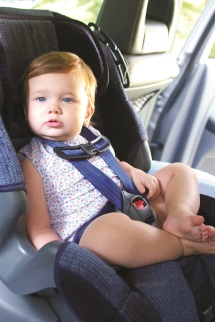Extended Rear-Facing: The Safest Way for Kids to Ride
Many parents (and children) are eager for the day when they can turn the car seat to a forward-facing position. Before you do the switcheroo, however, be sure to stop and review the latest recommendations from the American Academy of Pediatrics (AAP).

Keep kids rear-facing as long as possible
The AAP recently updated its car seat safety guidelines in accordance with the latest research. The biggest change? They’re no longer based on age.
The AAP now recommends that kids should stay rear-facing until they reach the maximum height or weight that the car seat manufacturer allows. Most convertible car seats have rear-facing weight limits up to at least 40 pounds. For many children, that happens well beyond their second birthdays.
Why keep them rear-facing for so long? In a crash, the car seat’s hard shell supports the child’s head, neck, and spine, and the car seat absorbs most of the impact. When the child is forward-facing, however, the harness straps restrain the body, but the head can get thrown forward, which can cause injuries to the head and spine.
Other car seat safety tips
Once you can safely turn your child’s seat around, your child should keep riding in the car seat until the he or she reaches the maximum forward-facing weight or height limit. Here are some more ways you can help protect your child in the car:
Check that the harness straps fit snugly against the child’s body.
Slide the chest clip to armpit level to keep the harness straps secure.
Never use a car seat that’s been in a crash, has been recalled, has cracks, is missing parts, or is beyond the expiration date that appears on the label.
Remove bulky clothing, such as winter coats and snowsuits, before putting your child in the car seat—in a crash, they flatten out and your child could get thrown from the seat.
Connect with us:
Download our App: